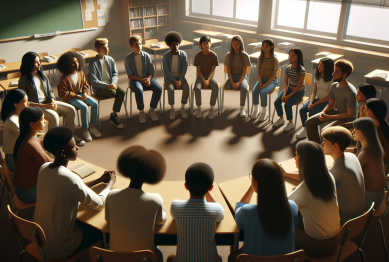Understanding what tracking distractions teaches you about work is transforming how we approach productivity in schools and offices. By monitoring how often and why we get sidetracked, we uncover hidden patterns that shape efficiency, stress, and even learning outcomes. This guide explains why tracking is powerful—and how to use those insights meaningfully.

Why Track Distractions?
1. Uncover Hidden Patterns
Logging distractions helps you see beyond occasional interruptions—it reveals recurring time drains, energy dips, and environmental triggers.
2. Boost Personal Accountability
Writing down when distractions happen forces you to acknowledge them. That self-awareness often results in better choices and focus habits.
3. Inform System Design
When organizations or classrooms track distractions at scale, it becomes possible to redesign schedules, policies, or even architecture for deep work.
What the Data Shows
-
Most people switch tasks every 3 minutes on average.
-
After a distraction, it can take 10–25 minutes to regain deep focus.
-
Digital notifications and alerts remain the top triggers, followed by chat interruptions and multitasking.
-
Logging distraction data can reduce idle time significantly—by as much as 40% in structured environments.
How to Track Your Distractions
Step 1: Pick a Tracking Method
Use a notepad, spreadsheet, or productivity app to record each time your attention breaks.
Step 2: Define Categories
Group distractions into digital (emails, social media), social (meetings, chat), internal (daydreaming), and environmental (noise, clutter).
Step 3: Record Context
For each distraction, jot down:
-
What you were doing
-
What distracted you
-
Time lost
-
How long it took to refocus
Step 4: Review Weekly
Identify trends like most common triggers, time-of-day patterns, or recurring environments where distractions spike.
What Tracking Distractions Teaches You
1. Not All Distractions Are Equal
Some, like creative daydreams, are restorative. Others, like notifications, are just noise. Tracking helps you distinguish.
2. Focus Time Is Fragile
Even minor interruptions carry a heavy cognitive tax. One 2-minute distraction can cost 20+ minutes of recovery.
3. Deep Work Requires Setup
Knowing when you’re most likely to be interrupted lets you guard deep work periods with better rituals or settings.
4. Patterns Are Personal
Some people are most vulnerable to distraction in the morning, others after lunch. Your tracking data tells your story.
Applying This in Education & Society
In the Classroom
Students and teachers can log distraction events during learning. This builds metacognitive awareness and improves classroom management.
In Workplaces
Organizations can run distraction audits, introducing practices like “no-meeting blocks” or silent work hours.
In Hybrid Environments
Remote workers can track digital versus environmental distractions to optimize their home setups and routines.
Practical Tips for Reducing Distractions
-
Use “focus timers” (Pomodoro method) during peak work hours
-
Silence all notifications during deep work blocks
-
Block websites temporarily with browser extensions
-
Schedule short distraction windows (scrolling, emails) rather than reacting instantly
Benefits of Tracking Distractions
-
Better time ownership and task clarity
-
Faster completion of work with fewer mistakes
-
Lower mental fatigue and stress
-
Improved emotional regulation through intentional recovery
-
Higher long-term performance and satisfaction
Common Pitfalls
-
Over-tracking: Don’t obsess. Short logs and weekly summaries are enough.
-
Blaming tools or people: Focus on systems and habits, not scapegoats.
-
Expecting instant change: Distraction habits are deeply ingrained—change takes weeks, not days.
Conclusion
The lesson in what tracking distractions teaches you about work is simple: attention is your most valuable resource, and it leaks in ways you might not see. By collecting data about how your mind wanders or gets pulled, you create space to rebuild focus intentionally. Whether you’re a student, teacher, manager, or remote worker, distraction tracking can teach you more about how you work than any to-do list ever will.
References
- Clockify. (n.d.). Effects of Workplace Distractions: Crucial Statistics.
- Insightful. (2024). Lost Focus Report: The True Cost of Workplace Distractions.
- University of Iowa. (2023). Monitoring Focus & Minimizing Distractions.









